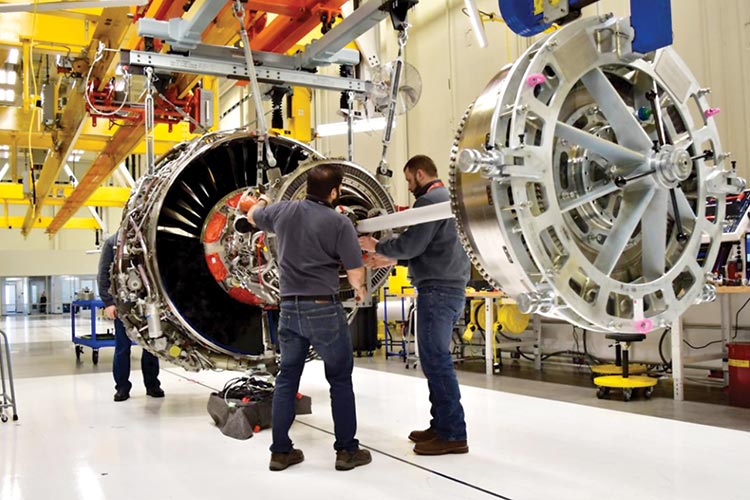US manufacturing sector slowing as economy loses momentum

Technicians busy at work in General Electric factory in Lafayette, Indiana. Reuters
The reports on Friday extended the streak of weak economic data and underscored the Federal Reserve›s “patient” stance towards further interest rate increases this year. Fed officials are scheduled to meet next Tuesday and Wednesday to assess the economy and deliberate on the future course of monetary policy. The US central bank raised rates four times last year.
The Fed said manufacturing production dropped 0.4 per cent last month, held down by declines in the output of motor vehicles, machinery and furniture. Data for January was revised up to show output at factories falling 0.5 per cent instead of slumping 0.9 per cent as previously reported.
Economists polled by Reuters had forecast manufacturing output rising 0.3 per cent in February. Production at factories increased 1.0 per cent in February from a year ago. Manufacturing accounts for about 12 per cent of the economy.
Motor vehicles and parts output slipped 0.1 per cent last month after tumbling 7.6 per cent in January. Excluding motor vehicles and parts, manufacturing output fell 0.4 per cent last month.
February›s drop in manufacturing production added to soft reports ranging from retail sales to housing in suggesting the economy lost significant momentum early in the first quarter. Goldman Sachs is forecasting gross domestic product will rise at a 0.6 per cent annualized rate in the first quarter. The economy grew at a 2.6 per cent pace in the fourth quarter.
US financial markets were little moved by the factory data.
In a separate report on Friday, the New York Fed said its general business conditions index fell 5.1 points to a reading of 3.7 in February. It was the third consecutive monthly reading below 10, which the New York Fed said suggested “that growth has remained quite a bit slower so far this year than it was for most of 2018.” A reading above zero indicates growth in the region›s manufacturing sector. The survey›s new orders index fell 4.5 points to 3.0 in March.
The weakness reported by the New York Fed also suggests that national factory activity remained sluggish this month after slowing sharply in February.
The Institute for Supply Management (ISM) reported this month that its measure of national manufacturing activity dropped to more than a two-year low in February, with a sharp decline in the new orders component.
Manufacturing is losing steam as the boost to capital spending from last year›s $1.5 trillion tax cut package fades. Activity is also being crimped by a trade war between the United States and China as well as by last year›s surge in the dollar and softening global economic growth, which are hurting exports.
The drop in manufacturing output last month was offset by gains in utilities and mining, leading to a 0.1 per cent rise in industrial production. Industrial output fell 0.4 per cent in January.
Utilities output rebounded 3.7 per cent last month as cold temperatures boosted demand for heating. Utilities output dropped 0.9 per cent in the prior month. Mining output rose 0.3 per cent last month, matching January›s increase.
Oil and gas well drilling increased 2.8 per cent in February after two straight monthly declines.
Capacity utilization for the manufacturing sector, a measure of how fully firms are using their resources, fell to 75.4 per cent last month, the lowest level since May 2018, from 75.8 per cent in January.
Overall capacity use for the industrial sector dipped to 78.2 per cent from 78.3 per cent in January. It is 1.6 percentage points below its 1972-2017 average.
Officials at the Fed tend to look at capacity use measures for signals of how much «slack» remains in the economy - how far growth has room to run before it becomes inflationary.
Meanwhile, US crude futures briefly hit a 2019 high on Friday but later retreated along with benchmark Brent oil as worries about the global economy and robust US production put a brake on prices.
West Texas Intermediate (WTI) crude oil futures were down 48 cents at $58.13 per barrel at 1355 GMT, having hit their highest so far this year at $58.95.
Brent crude futures were at $66.51 per barrel, down 72 cents from their last settlement, and below their 2019 peak of $68.14 reached on Thursday.
The International Energy Agency said on Friday that the market could show a modest surplus in the first quarter of 2019 before flipping into a deficit in the second quarter by about 0.5 million barrels per day (bpd).
Reuters



